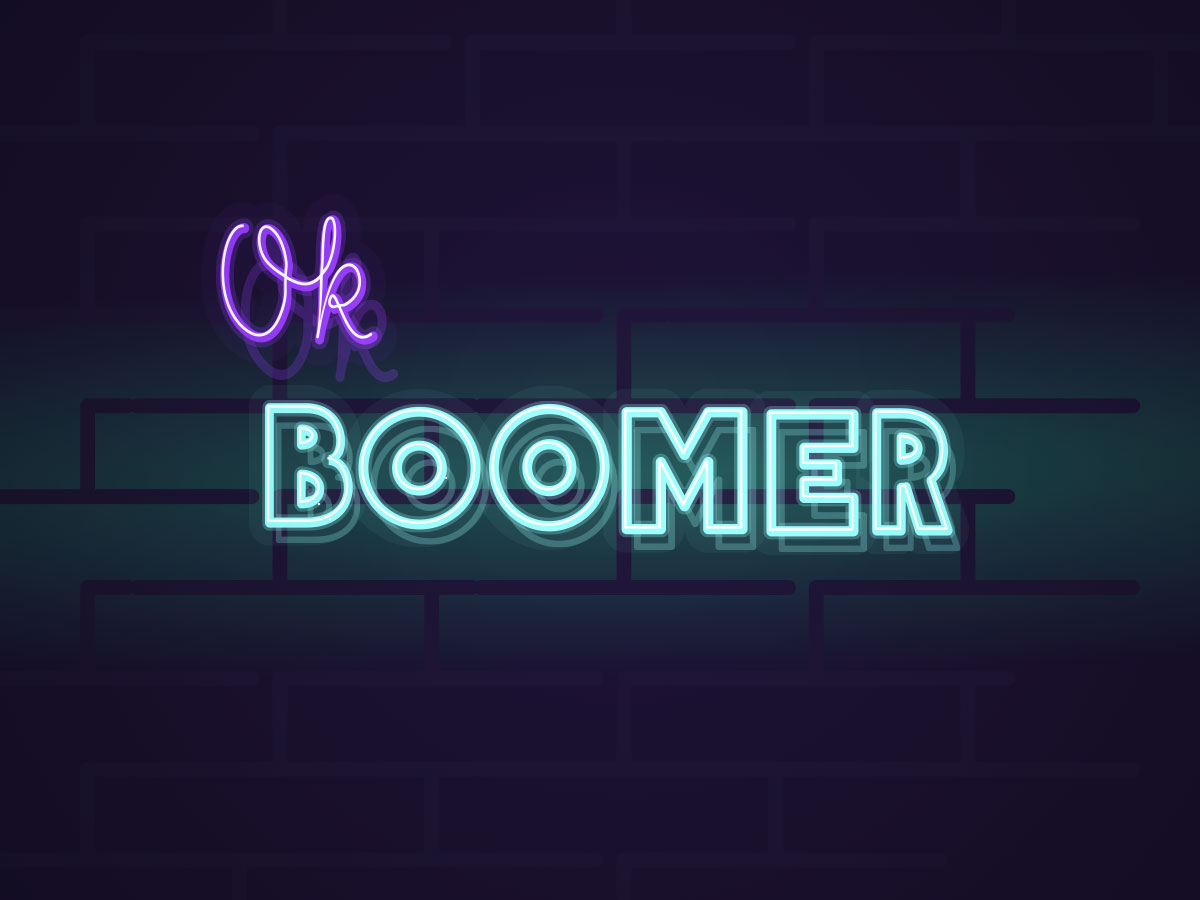

It’s a 2019 holiday scene: multiple generations of family gathered around the table, talking about politics, the economy, and pop culture. A member of the Baby Boomer generation shares an opinion, and the Gen Z family member replies, “OK, Boomer.”
The “OK, Boomer” meme emerged on TikTok in response to a rant from an unidentified man, presumably a Baby Boomer, calling out an “infantile” generation with “utopian ideals” that won’t translate into adulthood. It has grown into the latest lightning rod in the generation wars. Since its inception, there have been at least five trademark applications for the phrase, a New Zealand politician has said it on the parliament floor, and utterances have led to accusations of age discrimination in the workplace.
“OK, Boomer” has obviously struck a chord. But why?
Naturally, in groups as large and diverse as Boomers and Gen Z, not all members identify with their generation’s distinguishing values. But when they do, the power of that social connection can strongly reinforce their sense of identity. People are wired to form in-groups and out-groups, to identify as “us” and “them.” This is a natural extrapolation of the psychological phenomenon known as confirmation bias and one reason people wear brands as badges and join clubs. When two groups oppose each other, both groups will feel enhanced identity with “their” group. So “OK, Boomer” and the ensuing discussions are actually working to entrench people with high generational identity in their respective camps.
Weeks after the meme’s first launch, we’re all still talking about “OK, Boomer.” Why? Because generational identity is not only a popular way of slicing marketing research data, but it’s also becoming an increasingly prominent way for people to communicate their values. Generations have always been at odds with each other, but now, for the first time, five generations of Americans are inhabiting the workforce and voting in elections. That’s five different generations, from the Silent Generation to Gen Z, who must overcome the differences in their values, lifestyle choices, and approaches to technology… and who marketers much reach without alienating large numbers of potential buyers.

It’s incredibly important for marketers to understand what informs personal identity. When individuals identify with a group, they feel connected to it and see themselves as part of a larger community. They’re also more likely to have positive mental associations with that group, seek out positive information, and ignore the negative information.
You’ve seen brands that have successfully built high identity among their consumers. Brands like Nike, Southwest, Apple, and Trader Joe’s have all successfully communicated values in a way that consumers can identify, relate to, and internalize. By increasing consumer identity with your brand or product, you increase how much consumers perceive the product to be a part of themselves. High identification yields higher commitment, higher satisfaction, and longer relationships.
Identity can also be used to profile valuable consumer targets. Brands should look at their enthusiasts and ask: what are the shared features of those with high identity? How do we reach them and others like them? It’s not enough to target a broad swath of the population that happens to be born in the same year; you need to understand the values communicated through these inter-generational discussions that resonate with your brand and build those out into a strong identity.
We haven’t seen the last of the generation wars. “OK, Boomer” will likely join “Millennial Snowflake” as a term used to opine about a generational stereotype. While generations are too large and vague a group to segment on, the conversation around generational differences provides key insights about the individuals who identify with their generation. Whether your brand is trying to reach the Silent Generation, Gen Z, or everyone in between, it’s important to connect with your consumers on shared values and create a space for social bonding within your brand experience.
You must be logged in to post a comment.